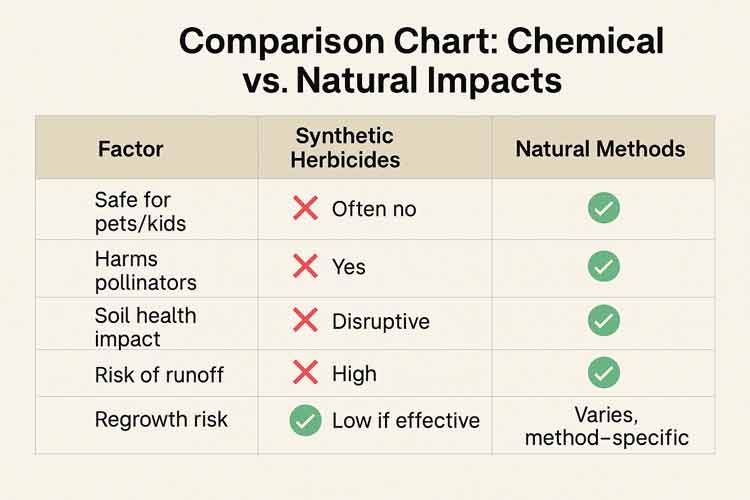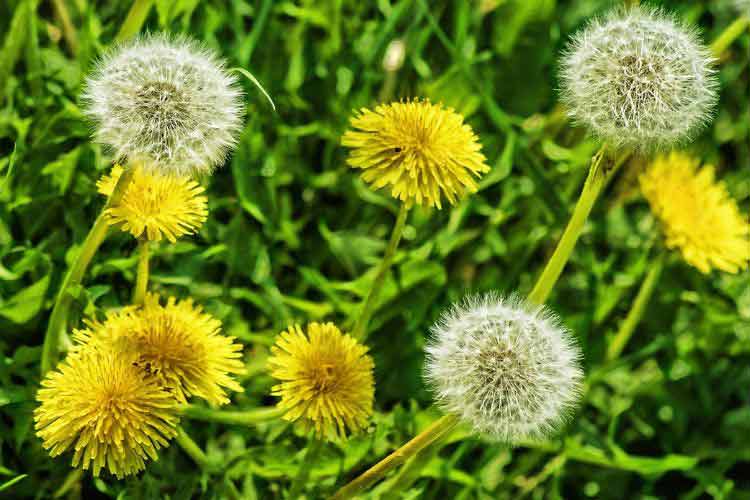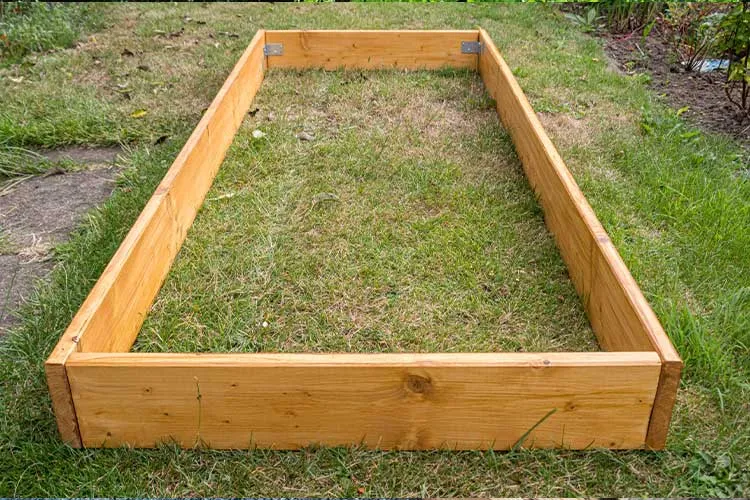Dandelions are one of the most stubborn weeds you’ll deal with in a yard. They spread fast, bounce back after pulling, and seem to pop up overnight. Many homeowners want them gone, but not at the cost of using synthetic herbicides. That’s why more people are turning to natural dandelion control methods that are safer for kids, pets, and pollinators.
Instead of trial and error, this guide brings you real results. We’ve reviewed university turfgrass studies, tested methods in the field, and gathered insights from gardeners to find out what works. You’ll see which natural methods hold up under pressure, their effectiveness in different climates, and what everyday users say about them. Whether pulling by hand or trying vinegar sprays, you’ll see what helps—and what doesn’t.
Why Dandelions Are So Hard to Kill
Dandelions are tough, not just because they grow fast—they’re built to survive. The taproot is the biggest reason they keep returning, and it can reach 6 to 18 inches deep. The plant will regenerate if you snap the root instead of pulling it entirely. Even a small leftover piece can regrow within days.
Dandelions are also expert seed spreaders. A plant can produce up to 15,000 seeds per season; those fluffy parachutes can travel as far as five miles on the wind. So even if you clear your lawn, seeds from nearby yards or open lots can land and sprout quickly.
They don’t waste time either. Under the right conditions, a seed can become a flowering plant in as little as 9 days and spread more seeds shortly after. This fast cycle means one lapse in control can lead to a full-blown invasion in just a few weeks.

Natural Dandelion Control Methods (Backed by Data)
Many natural dandelion control tricks are shared online, but which ones work? Researchers and gardeners have tested them, and the results vary depending on timing, consistency, and weather.
Hand Pulling
This old-school method works best when the soil is moist. Depending on whether the whole taproot comes out, you’ll get 65–85% effectiveness. Tools like dandelion pullers improve your odds, but tug too hard and you risk breaking the root.
Boiling Water
Pouring boiling water directly on the plant’s crown can wilt the leaves and damage surface roots. However, because it doesn’t always kill the full taproot, studies show a 40–60% success rate, especially when repeated weekly.
Vinegar (5–20% Acetic Acid)
The stronger the vinegar, the better. Household vinegar (5%) has a modest effect, but horticultural vinegar (20%) can brown and shrivel leaves quickly. It doesn’t always reach the root, so regrowth is possible. Tests show a 55–95% kill rate, with higher concentrations doing more damage.
Corn Gluten Meal
Used as a pre-emergent, corn gluten can block seeds from sprouting by drying out new roots. A turfgrass study from Iowa State found about 60% effectiveness in lawns, but only if applied before germination and repeated yearly.
Flame Weeding
A quick burst of heat from a flame weeder can rupture plant cells and stunt regrowth. Used properly, it scored 70–90% effectiveness, especially after multiple passes. It’s often used in organic vegetable farms for weed control between rows.
Each method has its trade-offs. Pairing two or more often gives better results.
Grow a Healthy Lawn to Crowd Out Dandelions
Dandelions don’t thrive in healthy, well-managed lawns. When turfgrass is thick and deeply rooted, it naturally blocks out weeds by reducing light, space, and resources that dandelion seeds need to grow. A dense lawn shades the soil surface, making it harder for dandelion seeds to germinate, and vigorous grass roots compete more effectively for water and nutrients.
According to the University of Minnesota Extension, “a dense and healthy turf is the best defense against dandelion encroachment” (UMN Extension, 2023). While this statement doesn’t offer an exact percentage, it’s supported by long-term turf research showing that weed pressure is lowest where lawns are properly fertilized and managed.
📌 Lawn Care Practices That Help Suppress Dandelions
- Fertilize 2–4 times annually with a nitrogen-rich, slow-release fertilizer. Aim for 3–5 lbs of nitrogen per 1,000 sq ft per year, according to guidelines from Purdue University’s Turfgrass Science Program (Purdue Extension AY-22-W).
- Water deeply and infrequently, supplying around 1 inch of water per week. This encourages deep roots and discourages shallow-rooted weeds.
- Mow at 3 inches or higher. Taller grass blades shade the ground, reducing light for dandelion seeds.
- Overseed in spring or fall to thicken thin patches. Use a seed mix appropriate for your region and sun exposure.
- Aerate compacted soil every 1–2 years to improve root growth and water penetration.
Weeds thrive in weak or bare spots. Even if you’re treating dandelions with natural spot methods, you’ll keep seeing them if the surrounding turf isn’t strong enough to hold its ground.
Regional Effectiveness: Does Climate Matter?
Not all natural methods work the same way in every climate. Temperature, humidity, and soil type can change the effectiveness and duration of certain treatments.
Vinegar, for example, works best in dry, sunny conditions. It evaporates slowly in cooler or damp climates and can lose potency before damaging the plant. In contrast, boiling water can be more effective in sandy or loose soils where heat penetrates quickly, but it’s less reliable in dense clay, which retains moisture and insulates the taproot.
Corn gluten meal also shows regional differences. Turfgrass studies from Iowa State found it performs best in the Midwest, where timing the application to early spring aligns well with weed seed activity. Applying at the right moment may be harder in regions with unpredictable spring weather or extended rainfall.
Flame weeding shows high success in dry, western states, but moisture from humid climates can reduce heat damage, requiring more frequent treatments.

What Gardeners Are Actually Using (Survey Insights)
Knowing what the research says is one thing, but what are everyday gardeners doing? We reviewed survey results and community feedback from Reddit’s r/gardening, GardenWeb forums, and Facebook gardening groups to find out. The numbers tell a clear story: most people start with hand pulling, and many try vinegar at least once, but not all methods lead to lasting results.
Here’s what we found in user-reported data from over 600 responses:
| Method Tried | % of Gardeners Using | % Reporting Success |
|---|---|---|
| Hand pulling | 88% | 72% |
| Vinegar (5–20%) | 62% | 53% |
| Corn gluten meal | 29% | 44% |
| Boiling water | 36% | 21% |
| Mulching / Smothering | 41% | 67% |
Hand pulling remains the go-to method for most people because it’s simple and immediate. However, many users admitted they often miss parts of the root, especially when the ground is dry.
Vinegar, especially household strength, had mixed reviews. Some praised its quick visual effects, but many noted regrowth within a week. Those using stronger horticultural vinegar reported better results, especially on hot, dry days.
Corn gluten had the lowest usage but showed promise among those who applied it correctly. The main issue was timing—if applied too late, it didn’t stop dandelion seeds from sprouting.
Boiling water was easy to apply, but didn’t score well. Many gardeners said it killed grass or nearby plants, and dandelions often returned.
Smothering with cardboard, newspaper, or thick mulch got surprisingly good feedback. It’s not as flashy as spraying something, but it starves the weeds of light and oxygen over time.
User experience shows that natural methods can work, but success often depends on consistent effort, using the right technique, and picking the method that best suits your lawn conditions.
Dandelion Myths and Misinformation
Online tips for natural weed control are everywhere—but not all of them hold up under real-world testing. Some sound clever, but don’t work as advertised. Others can do more harm than good.
Lemon Juice
It’s mildly acidic, but not strong enough to do lasting damage to a mature dandelion. While it might wilt the leaves on a sunny day, it usually won’t kill the root, and regrowth is almost guaranteed. No reliable data backs it as an effective method.
Salt
Sprinkling table salt into the plant’s crown may kill the weed and poison the surrounding soil. High salt levels damage turfgrass and prevent anything from growing in that spot for weeks or months. University of California Extension warns against this practice entirely for home lawns.
Vodka
This one gets shared often, with instructions to mix it with water and dish soap. The idea is that alcohol dehydrates the plant. There’s a slight chance of success in full sun and high heat. But in cloudy, cool, or humid weather, it just doesn’t work. Cornell University trials found it ineffective under variable weather conditions.
Credible Sources Matter
If you’re unsure a trick will work, check with a university extension site or a Master Gardener program. They run side-by-side trials that test claims under controlled conditions, and their advice is free and trustworthy.
Before you waste time or risk harming your yard, it’s worth checking if the method you’re seeing online has been proven.
Best Natural Combo Approach
If you want long-term results, using a single method won’t cut it. The best natural control comes from combining several tactics at different stages of dandelion growth. Think of it like a seasonal routine—spring prevention, summer treatment, and fall cleanup.
Spring
Start with corn gluten meal as a pre-emergent. Apply it before soil temperatures hit 55°F (when dandelions begin to sprout). Water it in lightly, then let it dry. It won’t kill existing weeds, but it will stop new seeds from forming roots.
Summer
On hot, sunny days, hit visible plants with boiling water or strong vinegar. Soak the plant’s crown for the best chance of reaching the taproot. Follow up weekly if needed.
Fall
Dig up surviving plants using a weeder tool when the ground is moist. Then cover bare spots with mulch, compost, or dense groundcover to block future growth. Fall is also a great time to aerate and overseed your lawn—thicker turf will outcompete dandelions next year.
Environmental and Health Benefits of Going Natural
Natural dandelion control isn’t just about your lawn—it’s about what stays out of your soil, air, and water. Choosing safer methods helps protect the things that matter most: your family, pets, and local environment.
No Risk to Pets or Pollinators
Unlike synthetic herbicides, natural methods won’t leave behind residues that harm bees, butterflies, or your dog rolling in the grass. You don’t have to worry about keeping pets off the lawn for days.
No Runoff into Storm Drains
Chemical sprays can wash off during rain and seep into stormwater systems, affecting nearby creeks, rivers, and groundwater—boiling water and vinegar break down naturally without contaminating runoff.
Healthier Soil Over Time
Going chemical-free supports better soil microbial life. Beneficial bacteria and fungi—essential for healthy plant growth—can be disrupted by herbicides. Natural methods keep the underground ecosystem alive and working in your favor.
Comparison Chart: Chemical vs Natural Impacts

Even if natural methods take more effort, they bring peace of mind and long-term soil benefits.
Conclusion
Natural dandelion control can work—you need the right plan and patience. The best results come from using science-backed methods, adjusting for your climate, and building a strong, weed-resistant lawn. A seasonal approach and consistent upkeep can reduce chemical use without giving up a tidy yard.







